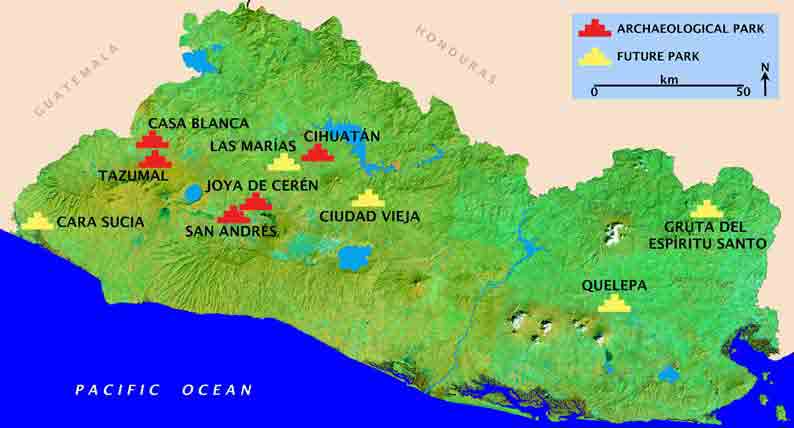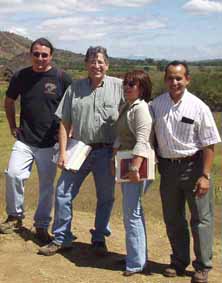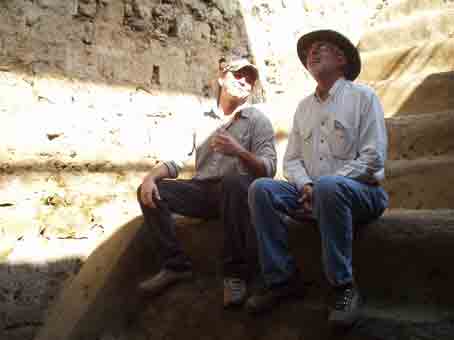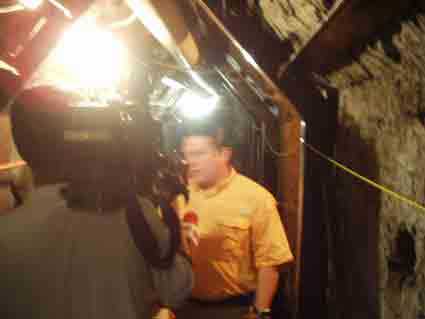The Archaeological Parks of El Salvador
Administration of the Archaeological Parks

El Salvador has 5 national archaeological parks. Click on their names in the map or below for information about each park:
All 5 parks share the same operating hours and fees:
Operating Hours :
Tuesday through Sunday, 9am - 4pm (closed on Mondays).
Fees:
- $1.00/Salvadorans, $3.00/ residents and other Central Americans, $5/foreigners.
- $1.00/motocycles and light vehicles, $3.00/heavy vehicles.
- Entrance is free for Salvadorans under 12 or over 60 years of age, and for residents of the local municipality.
The archaeological parks of El Salvador rank high amongst the most visited in Central America. The number of visitors to San Andrés or Tazumal alone is only exceeded by Tikal (Guatemala) and Copán (Honduras).
During the year 2009 we recorded the following visitor statistics for the 5 parks:
NOTES: Tazumal and San Andrés received larger numbers of visitors in December due to celebrations for Baktun 13, leading to aout 20,000 addtional visitors at Tazumal and 3,500 at San Andrés. Casa Blanca was closed through July and the data here are for August through December. The gran total of park visitors is 159% greater than in 2009.
The parks hold great importance for local education and tourism; 90% of total visitors are Salvadoran (and many of these are student). 10% are foreigners from diverse countries.
The number of students visiting the parks (particularly San Andrés, Joya de Cerén, and Tazumal) has many times far exceeded their capacity, and we have witnessed moments when over 3,000 students have been in a park, leading to a multitude of problems: parking lots crowded with buses, site museums filled to bursting, destruction of restroom facilities, impossibility of adequate supervision by school teachers, encumbrances created with regard to other park visitors, and so on.
FUNDAR introduced measures to address this previously tolerated overuse of the parks. Now it is requested that schools schedule their visits in advance so that we can coordinate their dates and avoid the massive crowds which are mostly a thing of the past. We have also attempted to limit the size of each school group (which formerly could be over 400 students) and ensure that there are sufficient teachers for supervision so that these visits can be a real opportunity for learning about prehispanic heritage.
Administration of the Archaeological Parks
The parks belong to the government and are under the direct responsibility of its cultural organ, the Ministry of Cultura (the sucessor of CONCULTURA, 1992-2009, and the Secretary of Culture, 2009-2018). Some parks were purchased (Cihuatán, Casa Blanca, Tazumal), while others were acquired under the agrarian reform laws (San Andrés and Joya de Cerén).
FUNDAR participated over several years in the co-management of the five parks under yearly contracts subscribed with the Government which specified the projects which FUNDAR was to carry out at each park during the year in question under its “Resources Transference Program”, or PTR (Programa de Transferencia de Recursos). Over 20 different non-governmental organizations (NGOs) participated in PTRs.
FUNDAR continues in the co-management of Cihuatán, and has raised over $500,000 for the development of the park, conservation of ancient structures and investigation.
Left: The PTR supervision committee at San Andrés in 2007, composed of Fabricio Valdivieso (then Chief of Archaeology, CONCULTURA), Paul Amaroli (FUNDAR), and Ivonne de Torres (CONCULTURA); Rafael Amaya (FUNDAR’s parks manager) appears to the right of this photo. Center: Fabricio Valdivieso and Rodrigo Brito (FUNDAR) in the area of the tunnel at San Andrés. Right: Marlon Escamilla (then of the Department of Archaeology) represents CONCULTURA in an interview with the media in 2007 about the tunnel in San Andrés (a PTR project).
Over many years time, the government has worked successfully with different NGOs in the co-management of archaeological parks. Joya de Cerén and San Andrés were developed and inaugurated as parks by the Patronato Pro-Patrimonio Cultural (now defunct), and subsequently managed for several years by this NGO under contracts subscribed with CONCULTURA. Tazumal and Casa Blanca were co-managed during a period of time by an NGO called Comité de restauración y conservación de la iglesia colonial Santiago Apóstol de la ciudad de Chalchuapa. The archaeological site – and future park – Ciudad Vieja was managed for several years by the Academia Salvadoreña de la Historia. It is also relevant to mention that the largest national park in El Salvador, El Imposible, is managed by the NGO SalvaNATURA; while this park was created to protect a primary forest, it also includes 7 recorded archaeological sites (one of which, Piedra Sellada, is in public access).
Two of the NGOs mentioned above, the Patronato Pro-Patrimonio Cultural and the Academia Salvadoreña de la Historia, also conducted archaeological investigations in the parks.
On a world-wide level there are many other important examples of the model of co-management by NGOs of cultural heritage sites belonging to states and nations. Here are some examples:
Panamá Viejo (Panamá, a UNESCO World Heritage Site), managed by the NGO Patronato Panamá Viejo.
Cahokia (State of Illinois, USA, a UNESCO World Heritage Site), managed by the Cahokia Mounds Museum Society.
El Mirador (Guatemala, a National Monument), the Foundation for Cultural and Natural Heritage Maya (PACUNAM) is the leading participant in the management and investigation of this site and its region.
El Brujo (Perú), the Wiese Foundation leads the investigation and conservation of this site and recently inaugurated a museum.
Future Archaeological Parks in El Salvador
Of the archaeological sites currently known in El Salvador, there exist several which clearly should be protected and managed as archaeological parks. Amongst these, there are 4 sites where the State has acquired land, and in others there are proposals to do so. These sites include:
The Gruta del Espíritu Santo is located a kilometer (0.6 miles) north of the town of Corinto (Morazán Department). This is the only future park currently recommended for visitors. This site has park guards who can accompany visitors during the same operating hours specified for the parks. There is no entrance fee. The site has a large rock shelter harboring pictographs (paintings on the rock face) which may possibly date to the Archaic Period (approximately 8000 to 1800 BC).
Ciudad Vieja, located in Cuscatlán Department near the road between San Martín and Suchitoto. This site is not recommended for visitors without a guide. Ciudad Vieja was the site of San Salvador from 1528 through 1545 when it was moved to its present location. It is one of the very few well-preserved Spanish sites from the conquest period.
Cara Sucia is located near the border with Guatemala, 3 kilometers (1.8 miles) south of the Litoral Highway near the “canton” Cara Sucia (Ahuachapán Department). Although this site is national property and has park guards, its structures are usually immersed in tall scrub, much to the frustration of its few adventuresome visitors. Cara Sucia’s occupation begins around 900 BC and this apparently Maya settlement continues until the Ilopango eruption in the 5th century AD. After a hiatus, the site was resettled and constituted one of the easternmost centers of the Cotzumalhuapa culture which flourished between AD 600 and 900 (the Late Classic period) along much of the Guatemalan coast as far as the western edge of Salvadoran territory.
Quelepa (San Miguel Department) is a very extensive site with a long occupation, stretching from about 500 BC to AD 900. Its pogee was in the Late Classic as one of the two known regional centers of the Shila and Lepa phases (the other is Tehuacán). The Government owns part of the site but it lacks guards and other minimal conditions for the visitor.
Las Marías (or “Pueblo Viejo Las Marías) is the largest archaeological site known in El Salvador, and is closely affiliated with its neighbor, Cihuatán (12 kilometers / 7 miles distant). Folloing the identification by FUNDAR of the areas with highest priority, approximately 50 manzanas of land has been acquired by the Ministry of Culture for a future park. It is no presently recommended for visitors.



